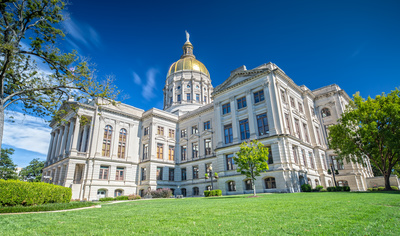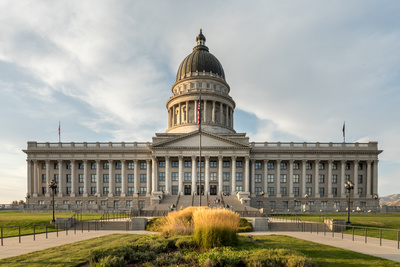
Elections & Campaigns, Energy & Environment
Nine States Face Key Public Utility Commission Elections Ahead of 2026
October 27, 2025 | Billy Culleton
January 24, 2024 | Ben Fallick

Key Takeaways:
After a busy year of climate change legislation in 2023, we expected similar momentum in 2024. State legislators around the country have already proposed many bills to institute new renewable energy targets, control carbon emissions, and create additional programs to help achieve these goals. Many of these bills follow similar trends in years past, but there are also new avenues to combating climate change and creating renewable energy, such as changes to classification standards and expanded interest in carbon capture beyond typical carbon-producing states.

Many states in 2024 are seeking to establish carbon capture or sequestration programs within their state energy departments. These programs would look to assist businesses and fund research to learn what role their state can play in carbon capture. A Maryland bill (MD HB 155) would establish the Maryland Carbon Capture Opportunity Program to assist businesses and research prospects with carbon capture in their state. Florida has a bill filed in both houses (FL SB 1258/HB 1187) to create a Carbon Sequestration Task Force which would set up a statewide carbon sequestration program. Another Florida bill (FL SB 1630) would set up a Carbon Sequestration Advisory Council to propose ideas for sequestered carbon, including markets on agricultural lands or carbon emissions trading. In Oklahoma, two bills (OK SB 1568 and OK SB 1569) would shift authority over the different types of carbon dioxide injection wells. In Wyoming, lawmakers prefiled a bill (WY HB 32) to amend the permitting process for sequestration projects and to clarify that the permits be used for the use of directional wells.
In addition to new legislation, carbon capture advocates scored another win at the turn to 2024 with Louisiana’s new regulatory power to approve carbon capture projects. Louisiana joins North Dakota and Wyoming as the third state to receive well-permitting authority from the US EPA. With this newfound authority and an existing oil and gas infrastructure in the state, expect new carbon capture projects to expand in Louisiana.
To start 2024, states have continued to revise their emissions targets and renewable portfolio standards to set green energy targets for the future. In Vermont, Representative Amy Sheldon, the chair of the House Committee on Environment and Energy, has proposed a bill (VT HB 289), which would increase the state’s Renewable Energy Standard goal from 75% renewable by 2032 to 100% renewable by 2030. In New Jersey, legislation (NJ SB 237) would revise the renewable energy goals to establish a 100% renewable portfolio standard goal in 2045.
After emissions reduction action last year in Washington, state legislators will take on corporate climate reporting this year. In a bill modeled after California’s new law, State Senator Sharon Shewmake proposed the Washington Climate Corporate Data Accountability Act (WA SB 6092). Under the proposed legislation, businesses with total annual revenue exceeding $1 billion dollars that do business in Washington would be required to report Scope 1 and 2 emissions beginning October 1, 2026, and Scope 3 emissions beginning October 1, 2027. In New York, two different bill proposals advocating for corporate climate disclosures (NY SB 7705 and NY SB 897/AB 4123). NY SB 7705 has similar language to the Washington bill. Corporate climate disclosures may be on the rise throughout state legislatures, but its implementation, an oft-forgotten part of the policymaking process, in California may be slower than expected after inevitable lawsuits and the slow regulatory process to spell out the details of the new rules.
States have searched for new energy sources to “green” their energy reliance as they set and revise renewable energy goals. Revisions to existing energy classification are much of the early action this year. Over the past few days, New Jersey legislators have introduced a flurry of bills targeted at adding nuclear energy to their puzzle. Bills to study the state’s nuclear potential (NJ SB 220), incentivize clean energy production through economic programs (NJ SB 366), and categorize nuclear as renewable (NJ SB 364) all seek to rapidly shift nuclear’s role in clean energy production. In Colorado, legislation (CO SB 39) would also shift nuclear energy’s definition to fall under clean energy. Similarly in Virginia, recently introduced legislation (VA HB 1074) would allow zero-carbon nuclear generating facilities to be eligible for the state’s renewable energy portfolio standard. In addition, hydrogen resources produced from zero-carbon facilities would also be included under the Virginia bill.
On the opposite end of the spectrum, a Maryland bill would restrict categories of what can be a renewable energy source. Legislation (MD HB 166/SB 146) prohibits forest-related resources such as old-growth timber, sawdust, and gas produced from animal and poultry waste from inclusion within the renewable energy portfolio standard in Maryland. If this bill gets traction, expect other states to follow and continually provide updates on what is considered renewable and non-renewable energy.
States continue to look for non-traditional, renewable energy sources that have become more popular in recent years. Virginia legislators have introduced bills to add geothermal heating and cooling systems (VA SB 508) and hydrogen and nuclear energy (VA SB 557) to its Renewable Portfolio Standard. In Illinois, legislators introduced a proposal for a Rust Belt to Green Belt Pilot Program (IL SB 193). With a focus on expanding construction projects for underrepresented populations, the bill focuses on building an offshore wind project off the coast of Lake Michigan.
These bills are only a few of the hundreds of bills being introduced across all state legislatures with the goal of shifting how American energy is consumed, produced, and categorized. As more state legislatures get back into session, more bills will look to tackle climate change and increase renewable energy use.
MultiState’s team is actively identifying and tracking environmental issues so that businesses and organizations have the information they need to navigate and effectively engage. If your organization would like to further track climate change or other environmental related issues, please contact us.

October 27, 2025 | Billy Culleton

August 13, 2025 | Bill Kramer

July 8, 2025 | David Shonerd